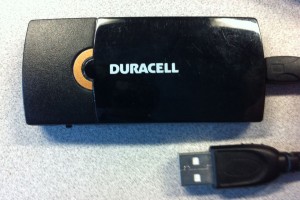“In this country, you gotta get the power first. Then when you get the power, you get the wi-fi. Then when you get the wi-fi, then you get the work done.” (if Scarface was made today)
Everyone has a special routine for travel. Here’s mine, with a focus on getting the most from your digital devices:
 There’s no reason to travel without full information; this is probably the most essential tip I can offer. I really like FlightTrack Pro (about $10) for this job. Input your flight information, and FlightTrack keeps track of it. This includes gate changes, late departures and layovers. If your flight is cancelled, all the phone numbers you need are right there. You can text or email your flight data to waiting parties, too.
There’s no reason to travel without full information; this is probably the most essential tip I can offer. I really like FlightTrack Pro (about $10) for this job. Input your flight information, and FlightTrack keeps track of it. This includes gate changes, late departures and layovers. If your flight is cancelled, all the phone numbers you need are right there. You can text or email your flight data to waiting parties, too.
When you travel you really rely upon and use your phone, so I always carry charging cables and a spare battery. Mine is a Duracell USB Instant Charger, (about $20). It’s small, yet offers up to 180 extra minutes of talk time on your iPhone.
At the airport, your huddled masses yearning to power their digital devices are easily identified. Rather than re-enacting a scene from Road Warrior, make peace with this tribe with the Monster Power to Go mini power strip. It’s compact and relatively flat so you can stuff it into your computer bag. Mine has three AC outlets plus USB power for an iDevice. Also recommended for the live-tweeting nerd rodeo at social media events. When you get to your hotel room, the strip will help you keep all your equipment together and charged.
 In the air, it’s nice to create some psychological distance from the many other passengers. Ditch those cheap earbuds that came with your iPod. You’ve got two kinds of solutions for air travel: isolation earbuds or noise-cancelling headphones. I’ve gone the isolation route. My Etymotic ER6i phones use a triple-flange to seal out the crying babies and chatty seatmates (alternate tip: tell your seatmate you’re an undertaker). Some people don’t like the feeling an object deep in your ear canal, but it doesn’t bother me. The Etymotics also sound terrific, and because the noise is sealed out, you don’t have to crank your volume so high, so you also conserve your batteries. If you hate the idea of something in your ears, try noise-cancelling headphones instead. These use an active circuit to “listen” to the noise, then manipulate the phase of the audio signal to try to eliminate it. The most popular model seems to be the Bose Quiet Comfort, but they’re expensive. If you’re in the market, the experts at headphone.com round up the best (at all price points) of in-ear and noise-cancelling phones for you.
In the air, it’s nice to create some psychological distance from the many other passengers. Ditch those cheap earbuds that came with your iPod. You’ve got two kinds of solutions for air travel: isolation earbuds or noise-cancelling headphones. I’ve gone the isolation route. My Etymotic ER6i phones use a triple-flange to seal out the crying babies and chatty seatmates (alternate tip: tell your seatmate you’re an undertaker). Some people don’t like the feeling an object deep in your ear canal, but it doesn’t bother me. The Etymotics also sound terrific, and because the noise is sealed out, you don’t have to crank your volume so high, so you also conserve your batteries. If you hate the idea of something in your ears, try noise-cancelling headphones instead. These use an active circuit to “listen” to the noise, then manipulate the phase of the audio signal to try to eliminate it. The most popular model seems to be the Bose Quiet Comfort, but they’re expensive. If you’re in the market, the experts at headphone.com round up the best (at all price points) of in-ear and noise-cancelling phones for you.
Before you depart, download content for the trip. You can’t really use streaming services like Netflix or Hulu while in the air. I like podcasts from National Public Radio, such as Fresh Air. If you use an iPad, the digital magazines from Conde Nast (Wired, New Yorker, Vanity Fair, GQ) as well as Amazon Kindle books are all readable with no Internet connection. If you’re a voracious web reader, clip your articles in advance with Instapaper for offline reading later.
Sometimes the trips are fast and smooth; sometimes you’ll spend eight hours at O’Hare and then they’ll send you back home. The basic plan for me is to prepare, pack the essentials, but also to travel light.
What’s in your essential travel kit? Leave your picks in the comments.
Here’s a more detailed look at travel apps from the NY Times:
http://www.nytimes.com/2012/05/03/technology/personaltech/a-review-of-airport-guide-apps-app-smart.html